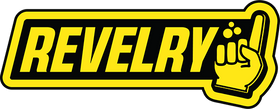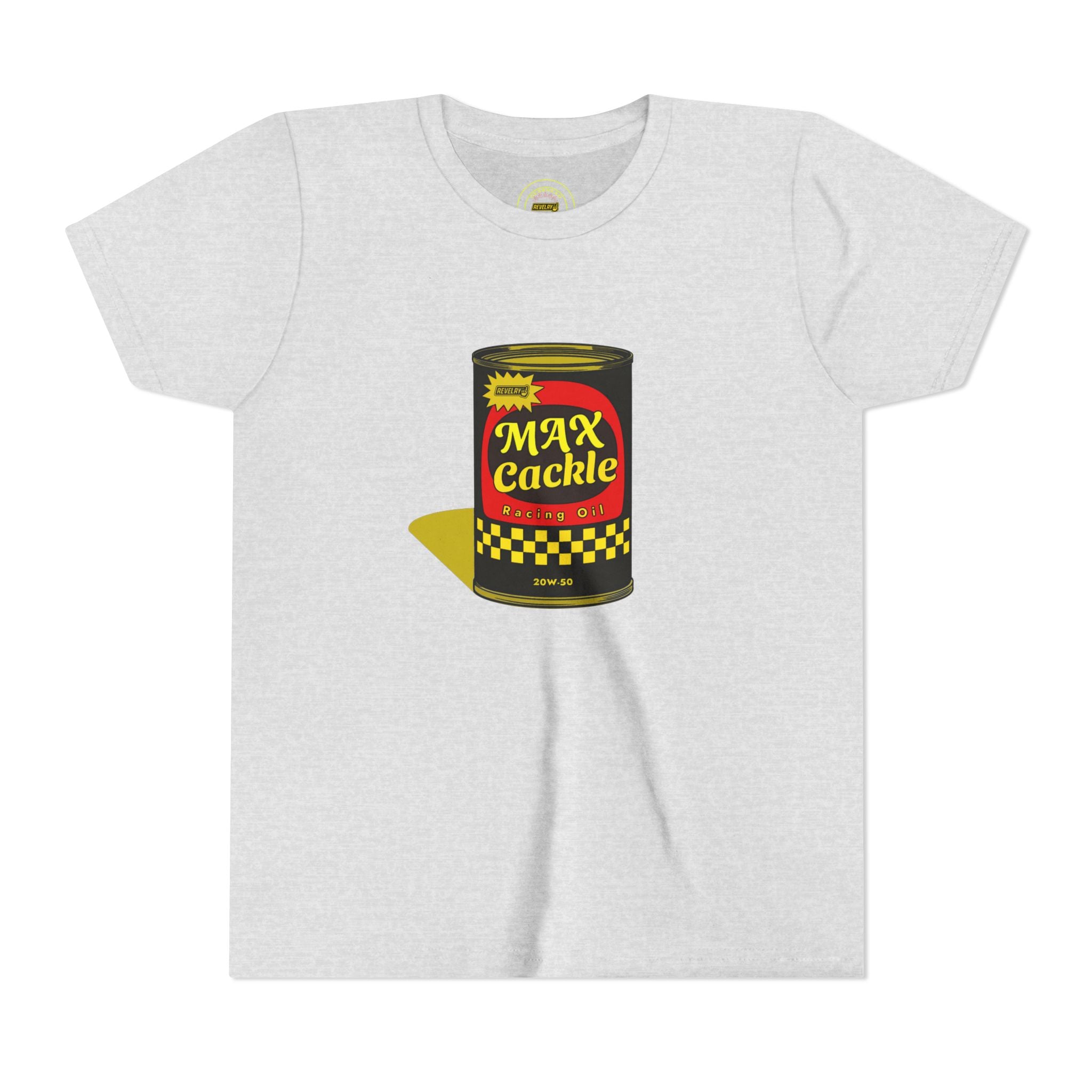The Ultimate Garage Setup for Hot Rods: Tools, Gear, and Layout Tips

Every hot rodder knows the feeling - that moment when you walk into a perfectly organized garage where every tool has its place, every project flows seamlessly, and the smell of motor oil mingles with possibility. Your garage isn't just a workspace; it's the birthplace of horsepower dreams and the sanctuary where raw steel transforms into rolling art.
"My happiest memories have always been at the track—the sounds, the smells, the stories shared in the pit area," says Troy Coughlin Jr., three-time champion and founder of Revelry1. "But before any of that magic happens on race day, it all starts in the garage. That's where the real work gets done."
So, whether you're building your first hot rod or you're a seasoned fabricator with decades under the hood, creating the ultimate garage setup is essential for efficiency, safety, and pure enjoyment. This guide will help you transform your space into a high-octane haven that would make any gearhead proud.

Why Your Garage Setup Makes All the Difference
A well-planned hot rod workspace isn't just about looking professional—it's about maximizing your time, protecting your investment, and creating an environment where creativity can flourish. The right setup typically reduces fatigue, prevents costly mistakes, and makes even the most complex builds feel manageable.
Think of your garage as mission control for your automotive adventures. Every tool, every workstation, every square foot should serve a purpose in bringing your vision to life.

Essential Tools: Building Your Hot Rod Arsenal
The Foundation: Hand Tools That Never Let You Down
Your basic hand tool collection forms the backbone of any hot rod build:
- Complete socket sets (both SAE and metric, 1/4" to 3/4")
- Combination wrenches (8mm to 24mm, 1/4" to 15/16")
- Precision torque wrench (critical for engine work)
- Quality screwdrivers (flathead and Phillips, various sizes)
- Pliers set (needle-nose, standard, and locking)
- Dead blow hammer (protects surfaces while providing force)
Power Tools: When Muscle Isn't Enough
Hot rod builds demand efficiency, and these power tools deliver:
- Cordless impact wrench (minimum 400 ft-lbs torque)
- Cut-off tool or reciprocating saw (for precise metal cutting)
- Drill press (essential for accurate hole placement)
- Angle grinder (4.5" and 7" for versatility)
- Belt sander (for smoothing welds and bodywork)
Welding: The Heart of Custom Fabrication
No hot rod garage is complete without welding capabilities:
- MIG or TIG welder (240V minimum for thick steel)
- Auto-darkening welding helmet (protects eyes and improves precision)
- Welding gloves and a fire-resistant apron
- Proper ventilation system (crucial for health and safety)
- Welding table (flat, sturdy surface for consistent results)
Air Power: The Breath of Your Workshop
A robust air system powers multiple tools and processes:
- Two-stage air compressor (minimum 60-gallon tank)
- Air filtration system (removes moisture and contaminants)
- Pneumatic impact tools (faster than electric alternatives)
- Air-powered sanders and grinders
- Paint spray equipment (for finishing touches)
Lifting and Support: Working Safely at Height
Getting under your hot rod safely is non-negotiable:
- Two-post or four-post lift (ideal for serious builders)
- Heavy-duty floor jack (minimum 3-ton capacity)
- Quality jack stands (always use in pairs, never trust a jack alone)
- Engine hoist (2-ton capacity handles most applications)

Organization: Every Tool in Its Place
Workbench Central Command
Your workbench serves as mission control for detailed work:
- Heavy-duty construction (steel frame with hardwood or metal top)
- Integrated vice (minimum 6" jaws for holding parts)
- Built-in storage (drawers and cabinets keep essentials close)
- Electrical outlets (multiple locations for power tools)
- Good lighting (LED task lighting eliminates shadows)
Smart Storage Solutions
Efficient storage keeps your workflow smooth:
- Rolling tool chests (mobility for different project areas)
- Wall-mounted pegboard systems (visual tool organization)
- Overhead storage (seasonal items and bulk supplies)
- Parts bins and organizers (small hardware stays sorted)
- Magnetic tool strips (frequently used items within reach)
Cleaning and Maintenance Station
Keeping parts and tools clean extends their life:
- Parts washer (solvent-based for heavy degreasing)
- Ultrasonic cleaner (perfect for small, intricate parts)
- Shop vacuum (wet/dry capability for various messes)
- Pressure washer (exterior cleaning and undercarriage work)

Layout: Designing for Maximum Efficiency
Zone-Based Workshop Design
Organize your garage into functional zones:
Fabrication Zone
- Welding equipment and metal stock
- Cutting tools and grinders
- Ventilation and fire safety equipment
Assembly Zone
- Vehicle lift or work area
- Engine hoist and transmission jack
- Assembly tools and precision instruments
Storage Zone
- Parts inventory and supplies
- Finished components awaiting installation
- Seasonal items and documentation
Workflow Optimization
Plan your layout for logical project flow:
- Rough work to finish work (grinding area separate from assembly)
- Tool accessibility (most-used items within arm's reach)
- Material flow (easy movement of parts between stations)
- Safety considerations (clear exit paths and emergency equipment)

Safety: Protecting Your Most Important Asset
Essential Safety Equipment
Your safety gear is as important as any tool:
- Safety glasses (prescription available for those who need them)
- Hearing protection (both earplugs and over-ear options)
- Respirator masks (P95 minimum for grinding and painting)
- Steel-toed boots (protection from dropped parts)
- Fire extinguisher (Class ABC, easily accessible)
- First aid kit (well-stocked and regularly updated)
Environmental Safety
Protect yourself and your investment:
- Proper ventilation (exhaust fans for fumes and dust)
- Adequate lighting (minimum 50 foot-candles for detailed work)
- Non-slip flooring (textured surfaces prevent accidents)
- Electrical safety (GFCI outlets in all locations)

Advanced Upgrades: Taking Your Garage to the Next Level
Specialized Equipment for Serious Builders
Once you've mastered the basics, consider these upgrades:
- Media blasting cabinet (superior parts cleaning and preparation)
- Tire mounting equipment (mount and balance your own wheels)
- Alignment equipment (precision suspension adjustments)
- Dynamometer access (tune and test your completed builds)
Comfort and Convenience
Make your garage time more enjoyable:
- Climate control (heating and cooling for year-round comfort)
- Sound system (music makes long projects more enjoyable)
- Refrigerator (cold drinks for breaks and entertaining)
- Comfortable seating (planning and documentation area)

Budget Planning: Building Your Dream Setup Gradually
Phase Your Investment
Rome wasn't built in a day, and neither is the perfect garage. Just like the ancient empire that started with a foundation and grew through strategic planning and patient investment, your ultimate hot rod workspace should evolve gradually. Start with the essential tools and safety equipment that form your foundation, then methodically add capabilities as your skills develop and your budget allows.
Each upgrade—whether it's that first quality welder, a proper lift, or a comprehensive air system—represents another step toward your vision. The beauty lies not just in the destination, but in the journey of building something truly magnificent, one carefully chosen piece at a time.
Phase 1: Essential Foundation ($5,000-$10,000)
- Basic hand tools and safety equipment
- Quality workbench and basic storage
- Essential power tools
Phase 2: Power and Productivity ($10,000-$20,000)
- Air compressor system
- Welding equipment
- Vehicle lift or quality jack setup
Phase 3: Advanced Capabilities ($20,000+)
- Specialized equipment
- Comfort and convenience upgrades
- Professional-grade finishing equipment
Smart Shopping Strategies
Maximize your investment:
- Buy quality basics first (cheap tools cost more in the long run)
- Watch for estate sales (retired mechanics often have excellent tools)
- Consider used industrial equipment (often better than new consumer gear)
- Invest in safety (never compromise on protective equipment)

Inspiration from a Champion
Troy Coughlin Jr. knows what it takes to build winners, having earned three championships and 17 national victories. His approach to garage setup reflects the same attention to detail that makes him successful on the track:
"There's simply no place on earth I'd rather be than working in a well-organized garage," explains Troy. "When everything has its place and you can focus on the build instead of hunting for tools, that's when the magic happens. Your garage setup should inspire you to create, not frustrate you with inefficiency."

Making It Your Own
Remember that the ultimate garage setup is the one that works for your specific needs, space, and budget. Whether you're building vintage hot rods, modern muscle cars, or anything in between, the principles remain the same: organization, efficiency, safety, and passion.
Your garage should reflect your personality while serving your projects. Add personal touches like vintage signage, trophy displays, or custom lighting that make the space uniquely yours.

Ready to Start Building?
The perfect garage setup is an ongoing project, much like the hot rods that will be born within its walls. Start with the essentials, plan for growth, and never stop improving. Remember, every legendary build started with someone picking up a wrench in their garage.
Whether you're just getting started or ready to upgrade your existing setup, Revelry1 offers the apparel and accessories that help you look the part while you work. After all, building hot rods is about more than just the destination—it's about enjoying every moment of the journey.
Ready to gear up for your next build? Check out Revelry1's collection of premium automotive apparel and accessories designed by and for true gearheads.


